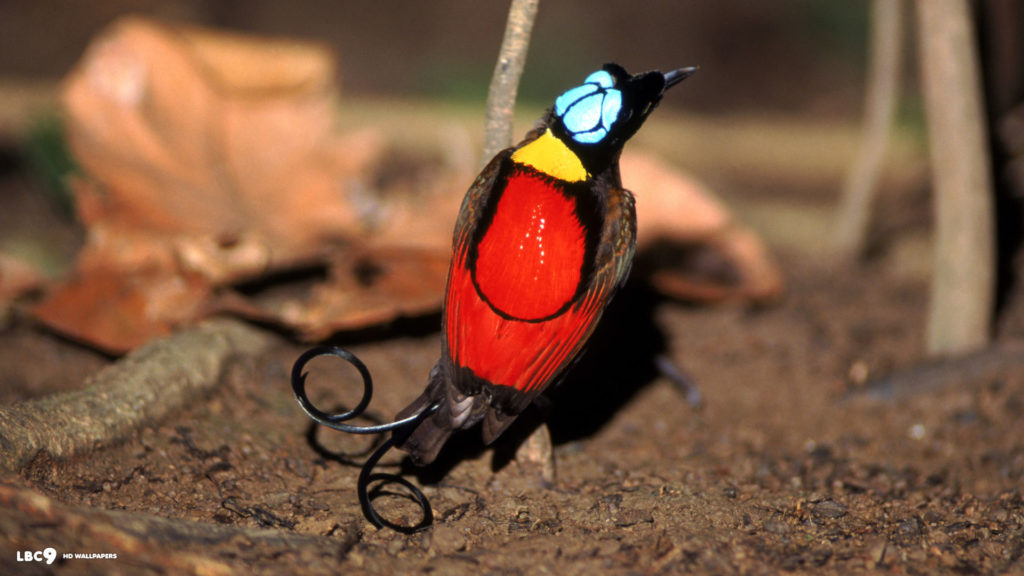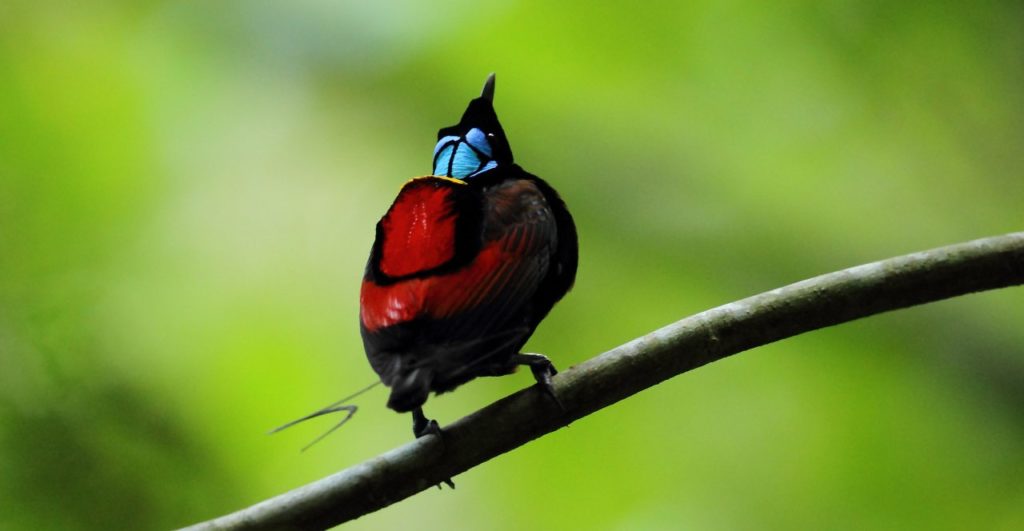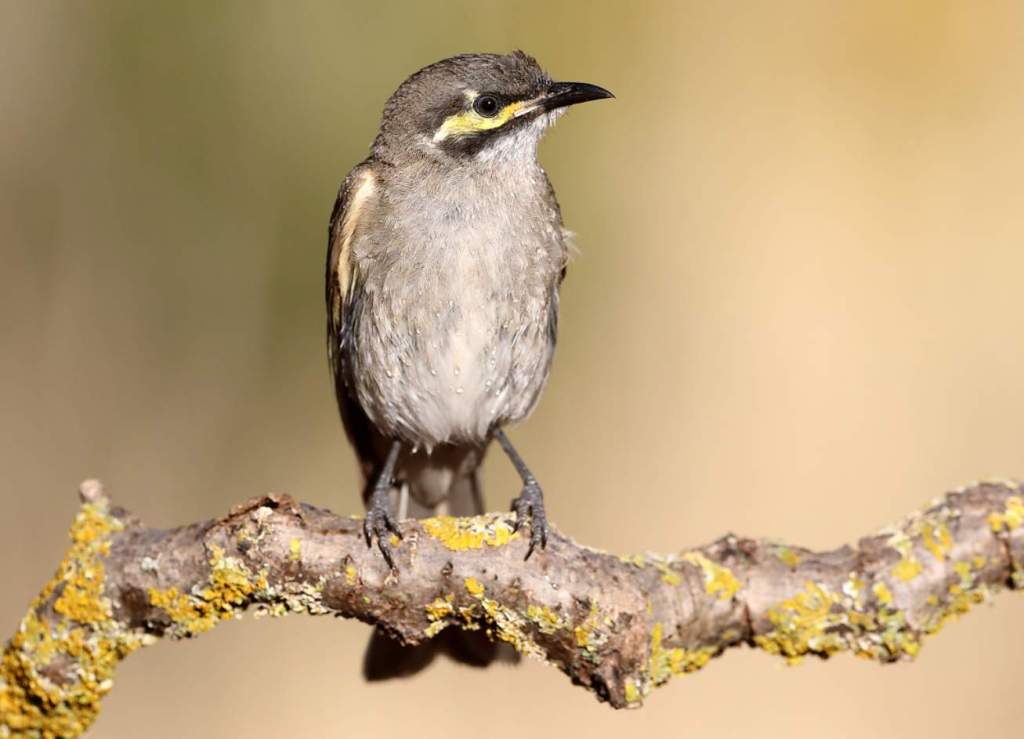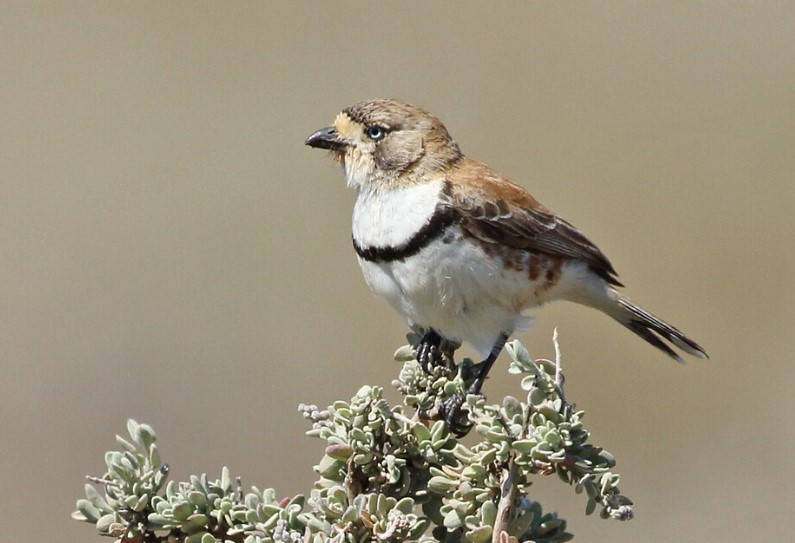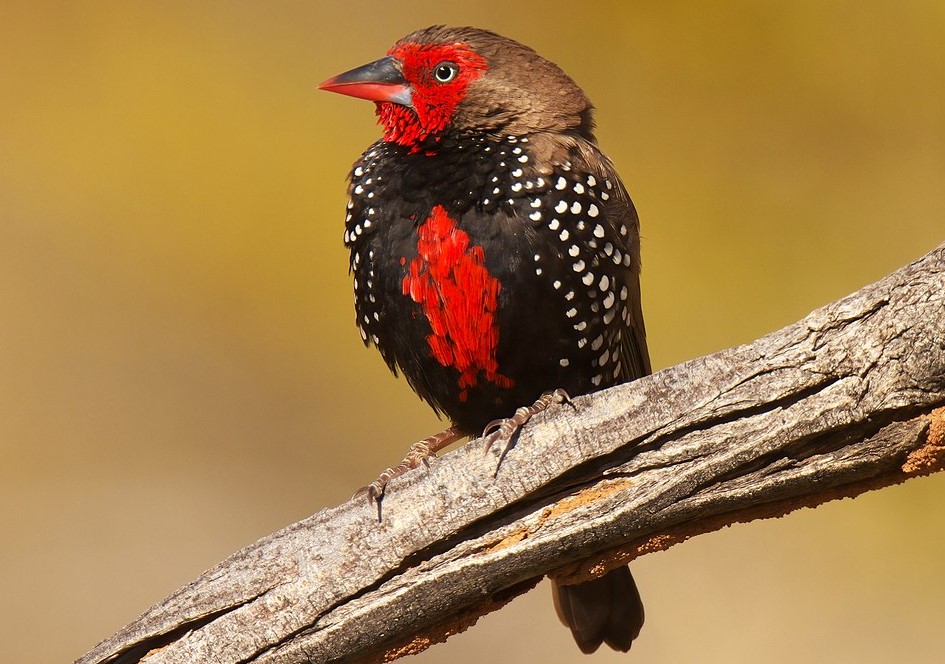The Wilson Bird of Paradise (cicinnurus respublica) is a species of passerine bird belonging to the Paradisaeidae family. The bird lives on the hills and lowland rainforests of Waigeo and Batanta islands in West Papua, Indonesia. Where it is reported to be frequent in suitable habitats. The exotic bird has a unique outlook with striking scarlet, yellow, green, and blue plumage. Especially, the turquoise dome of Wilson’s Bird of Paradise is hairless.
Its bare skin and two long, curved tail feathers also play a vital role in helping the males attract partners. The male bird looks more colorful as compared to the female, which has light brown plumage with a dark blue dome. The male bird entices the female by cleaning the leaves or debris to make their own stages in the forest. Wilson’s bird-of-paradise is small, up to 21 cm long, can reach 6.3 inches in length, and weighs 1.8 to 2.2 ounces of weight.
The blue bare skin on the crown of the bird’s head is so vivid. That it is clearly visible by night. The deep scarlet back and velvety green breast are lush, and the curlicue tail is gleaming bright silver. The bird mating season of Wilson’s Bird of Paradise takes place two times per year: from May to June and in October.
The Wilson Bird of Paradise habitually passes from branch to branch on the flat ground by bending. Their bodies are in different postures, spreading the colorful, iridescent plumage and chirping. The male bird shakes its lean neck or turns up its tail and opens its mouths in front of the female to entice its partner.
The Wilson Bird of Paradise was discovered in 1850. When its courtship dance was recorded by the famous naturalist David Attenborough in the wild,. Wilson’s bird-of-paradise diet consists mainly of fruits, small insects, and arthropods. The name “Wilson’s bird of paradise” was coined by Napoleon’s nephew. They gave a description of an unidentified bird that British scientist Edward Wilson had bought.
Moreover, this is a poorly known species, and no population estimates are available. Due to continued habitat loss, this species occurs within a very small range. It is likely to have a moderately small population. The bird is evaluated as near-threatened on the IUCN Red List of Threatened Species.
The rate of decline is not thought to be more rapid, as this species apparently persists in selectively logged forests. Hunting for skins may also contribute to the decline. The BBC cameraman David Attenborough first filmed his unusual behavior in 1996. It was dropping leaves on the forest floor, which irritated the bird into clearing them away. With its impressively colorful plumage, Wilson’s bird of paradise is considered the world’s most beautiful bird.
Also Read: The Hoopoes is Distinctive Crown Feathers Bird / White Bellbird – World’s Loudest Bird


